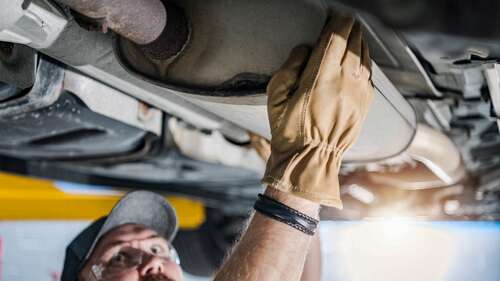
Before you learn about downpipes, you must understand how turbochargers work. In short, turbos come with two turbines that are connected. One of them is connected to the exhaust system and spools when the engine emits exhaust gases, which causes the other one to spin as well. The other turbine sucks fresh air in and forces it into the engine, allowing your car to breathe in more oxygen and ultimately perform significantly better.
On the other hand, the exhaust system lets the powertrain breathe out all the emitted gases that come from burning fuel in the cylinders. Breathing these gasses out is just as vital as breathing fresh air in. Not having a proper exhaust flow can choke up your car, leading to a significant drop in performance and a lot of back pressure on the engine.
Catalytic converters (also known as CATs) are some of the early pipes that exhaust gasses go through before they eventually get out of the exhaust tip. The role of a catalytic converter is to regulate your vehicle’s emissions so less dangerous gasses with fewer smells come out of your powertrain. On the downside, they restrict air from getting out as freely as possible, making breathing out more challenging for the engine.
You can swap the stock catalytic converter in your car with a downpipe, which is often a wider piping system with less restrictive parts, to let the air flow more efficiently, letting your engine breathe out better.

